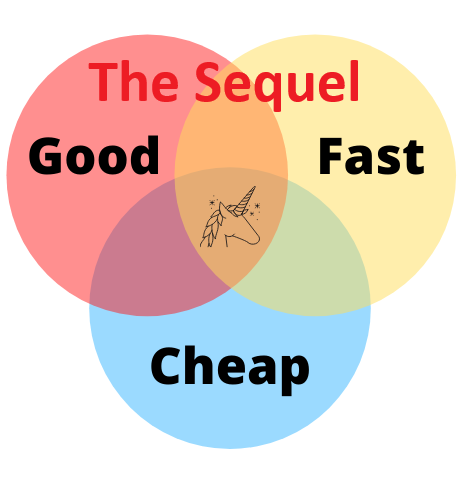If maintaining costs and lead times were interesting now, let’s add in supply chain turbulence and pricing uncertainty created by current tariff talk and the scramble to load up on inventory.
Since our previous post about decreasing project costs that provided seven of our solutions to stop scope creep and control pricing on quoted projects, here are five purchasing models that have helped our partners decrease supply chain costs and stay competitive.
1. Down Payment Model
Providing a total solution from purchasing all materials, hardware, and services adds additional costs and if your payables terms are +90 days, you are asking your suppliers to carry those costs from the time of your purchase order to the payment date after shipping. As an example, a kit we provide can take up to 12 weeks to complete with some long lead time purchased goods. We pay our suppliers in 30 days which means from the time of the purchase order to the time of payment can push out to 150 days where we are used as a bank. Just is what it is.
To remove some of the carrying costs of custom manufacturing, we offer an option where you provide a down payment to cover the materials and services at the time of the purchase order, and we remove the markup thus lowering the cost.
2. You Supply It Model
Some material, hardware, and service suppliers are unwilling to deal with lower quantities and if they are willing, it will be at a higher price per unit. There may even be a lot fee that extremely impacts that cost. Heat treaters are famous for this. You need a 20 lbs. part treated but there is a minimum lot fee for under 120 lbs.
The larger your company, the greater purchasing power you will have for sourcing the material, coordinating services with established vendors, and providing the hardware used for the project will decrease your project costs as well as lead times. We can order the motors and gearboxes, but chances are you will get better pricing by ordering them direct and having them shipped to us based on your targeted lead time.
Any company utilizing casting suppliers already knows this.
3. Multiple Quantities Model
We guarantee that quoting and ordering a quantity one of anything in the custom manufacturing space will be the highest price you can pay. There are ZERO efficiencies to be realized with material, hardware, tooling, labor, set up costs, tooling, and shipping. In actuality, a quantity of one from any manufacturer will double your lead times as suppliers no longer carry inventory of items that were easily available before and are now considered “made to order”.
As an example, a customer knew they were making five pieces of equipment, and we make the base stand. The material, the thickness, the pattern, and the finish were all the same. Just the mounting hole pattern changes. We helped them navigate the material purchase, the blanchard grinding, machined all five pieces to size and dimensions and now they are ready for the final mounting hole patters. The lead time from final prints to delivery is 2 weeks now. Not 12 weeks.
Quantities of 5 to 10 are ideal but after those quantities, there are minor material discounts to be passed on. The variable costs of production with tooling, coolant, utilities, set up, packaging, and shipping reach a diminishing impact after that.
4. Modified Stocking and Blanket Order Model
Does your ERP system really need to trigger an order for one unit every 3 weeks for the highest price possible, or can you use the data you have to order 5 and thus have them faster for you customer at a lower cost. The lower cost per unit is going to save you more than your supervisor concern about carrying inventory for 2.5 months.
This model builds upon the multiple quantities model and mimics how you already purchase goods from Costco or Sams club. You know you will be utlizing a number of items within a given amount of time, so you purchase a bulk quantity to lower the individual item cost. Not only does this realize decreased material and potential service costs, but there are labor savings as well since your supplier can produce the items in shoulder times and realize efficiencies in set up and machining times.
You are not invoiced until the items ship from your supplier and combined with the previous three models, this decreases supply chain costs even further.
5. The 80/20 Model
This model works well for product groups that use a similar base design but then customize hole patterns and sizes depending on final purpose and customer needs. Like the story above about the 5 base plates we made, we see this model working with welded gear box housings where the bores are the only variable, couplers where the only different is the internal bore and keyway placement, and valve bodies where the only variable is the mounting hole pattern.
We produce the parts to 80% completion which removes 80% of the lead time when you decide which final print to use.
Summary
Price increases are inevitably but there are options to lessen their impact and decisions you can make to maintain competitiveness. These five models are based on real world current solutions we are providing across all of the market segments we serve, and they have become increasingly useful as companies look to reshore work from oversees. Contact us directly or submit your RFQ through our portal to discuss what model or models are best for your situation,
For 70 years, Allis Manufacturing Corp. in Milwaukee, WI has proudly provided large machining, welding, assembly, repair and rebuild, and now painting and engraving for over a dozen industries. We consider ourselves a learning and teaching organization that not only takes pride in our quality and on-time rating but is also dedicated to helping #Neurodiverse individuals find meaningful employment in manufacturing.


